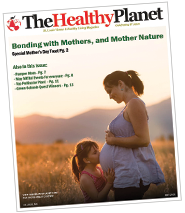By Elizabeth Cowie, MS, RD, LD
The New Year is a time that many consider making resolutions resolving to eat well and start a new diet plan.
One diet that is a recent topic of conversation is the gluten-free diet. Here is an overview of what gluten-free is and what it is not.
Gluten is a protein found in wheat, barley and rye. Individuals that have celiac disease will experience a toxic reaction when they consume gluten that can cause intestinal damage, poor nutrient absorption and potentially serious complications. Others have gluten intolerance where they can experience some symptoms of celiac disease but not test positive for the genes or antibodies.
For individuals with celiac disease or those that are intolerant to gluten, it is imperative that the utmost care be given to eliminating all gluten. Even the tiniest amounts of gluten can cause detrimental effects and not allow the gut to heal. Anyone beginning a gluten- free diet should first consult a registered dietitian.
Some may believe that eating gluten- free might be a way to become healthier or lose weight. It takes careful planning to follow a gluten- free diet. It can be time consuming and expensive and is not necessarily a healthier option for those that don’t need to eliminate wheat gluten.
When following a gluten- free diet is warranted, one has to become a dedicated food sleuth, being extra cautious to identify any product that might contain gluten. Even some toothpastes and medicines contain gluten! Newer labeling laws make it is easier to detect wheat on food labels, as it is bolded in the ingredients list on the Nutrition Facts panel. Individuals still have to take time to read the label closely for other sources of gluten (barley, rye, possibly oats) as these are not typically highlighted.
As with any diet plan, it is encouraged to focus on what one CAN eat rather what they cannot. There are many foods that are naturally gluten- free. One rule of thumb to keep in mind (really for all of us) is to eat more whole, less processed, foods closer to how they originally were grown. Fruits, vegetables, dairy, meats, eggs, beans and nuts and oils are all gluten- free if unprocessed in their natural state.
Thankfully there are many great tasting gluten- free options available using alternative flours and ingredients. Sappington Farmers Market carries a wide range of gluten- free foods in the grocery department as well as the freezer. Recently, Sappington Farmers Market and Andrea’s bakery teamed- up to offer special delivery options to their customers. Those interested can order any of Andrea’s food items and conveniently pick up the items at Sappington Market.
Elizabeth Cowie, MS, RD, LD is the Store Nutritionist for Sappington Farmers Market. Sappington Market is located at 8400 Watson Road, (314) 843-7848.


